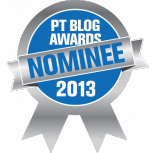 There are a myriad of common excuses that we can all find for not living the dream we so desire.
There are a myriad of common excuses that we can all find for not living the dream we so desire.
It is someone else's fault. I am unlucky.There is too much stress. I have too many exams coming up. I am not good enough.
But you know what? I hate to say it, but they are all just - excuses. More often than not, the real problem is simple.
Your own worst enemy is you. The best part, though, is that you are your own best friend and ally as well.
 It is a question that I hear regularly when talking to clinicians and students: what do you do if MDT doesn't work?
It is a question that I hear regularly when talking to clinicians and students: what do you do if MDT doesn't work?
The question usually causes me to shake my head and take a deep breath before venturing forth into a response. I wish I could say that it is only posed by those with little to no training in the method; however, I've heard this from more than a few MDT-credentialed clinicians over the years.
Let's start with the foundation for a response: MDT is not a treatment. It is a way of thinking.
 Thanksgiving is upon us once again. Thanksgiving always provides us with a day to eat turkey, catch some lovely fall weather (fingers always crossed), and take in another University of Texas football game against some unspecified cross-state rival (Texas Fight Texas Fight Yeah Texas Fight).
Thanksgiving is upon us once again. Thanksgiving always provides us with a day to eat turkey, catch some lovely fall weather (fingers always crossed), and take in another University of Texas football game against some unspecified cross-state rival (Texas Fight Texas Fight Yeah Texas Fight).
None of my family live in Texas. They are all still in Canada, so they celebrated Thanksgiving Day in October, otherwise known as Columbus Day in the United States. I don't mind celebrating two Thanksivings, especially if doing so provides the potential for more turkey.
Thanksgiving Day is followed by Black Friday, a day of retail specials and sales. Ugh. The best part of Black Friday is that it reminds me of a great song by Steely Dan, but I digress.
But with all kidding aside, Thanksgiving is a day to Give Thanks.
 Health care is chock full of a lot of telling. Telling the patient to do this or that. Telling the patient to not do something. There is a lot of telling going on around the health care world.
Health care is chock full of a lot of telling. Telling the patient to do this or that. Telling the patient to not do something. There is a lot of telling going on around the health care world.
Health care has its share of intelligent people doing the telling. And I have no doubt that there are many that are telling patients a lot of good things.
But one problem exists. We mistakenly focus on adherence and compliance with all the telling and immediately assume that behavioral change goes right along with it. A faulty assumption, indeed.
 I had never really planned on walking away from the guitar, not that I ever did so completely anyway. With that said, getting back on stage, guitar in hand, really wasn't on my radar for the immediate future.
I had never really planned on walking away from the guitar, not that I ever did so completely anyway. With that said, getting back on stage, guitar in hand, really wasn't on my radar for the immediate future.
That was until my friend Tad Hillin mentioned that he would be playing a gig at Strange Brew in Austin on August 31. As it was also his birthday, he was planning on having an open jam after the gig with fellow musician friends. About 6 weeks out from the gig, he suggested I bring my guitar and play.
Six weeks away. Minimal callouses on my fingers. Dexterity a little rusty. And the guitar chops faded from a time that seemed like eons ago.
Of course I would.
 There are certainly worse places to visit in October in Texas. A trip to Galveston for the Texas Physical Therapy Association's Annual Conference would be a nice break from preparing Anatomy practical exams for PT students, right? A little rest and relaxation - with a side order of walking along the Gulf Coast with the ocean and sand between my toes - would be welcomed.
There are certainly worse places to visit in October in Texas. A trip to Galveston for the Texas Physical Therapy Association's Annual Conference would be a nice break from preparing Anatomy practical exams for PT students, right? A little rest and relaxation - with a side order of walking along the Gulf Coast with the ocean and sand between my toes - would be welcomed.
Hold on, come back to the real world Allan. We're here for a conference, right?
Oh yes. The conference.
2014 was the 6th consecutive year that I have been invited to present at our Annual Conference. This year was the first time that I had a doubleheader: one session for the professional track ("The Role Of Social Media In Physical Therapy"), and one for the student track ("Form Follows Function: A Framework For Anatomy").
Without further adieu, here are a few thoughts from the experience.
 It's all in the spin I suppose.
It's all in the spin I suppose.
The headline was simple: "7 Myths About Physical Therapy". The press release from the American Physical Therapy Association was going to debunk some myths about physical therapy. How exciting, I thought.
Maybe this would set the record straight on any number of issues and misconceptions about our profession that exist in the public eye. Surely this would be a great opportunity for us to "Move Forward", yes?
And then, I read myth number one. It was, admittedly, hard for me to overlook.
 "Running Injuries: Etiology And Recovery- Based Treatment" (co-author Bridget Clark, PT) appears in the third edition and fourth editions of "Clinical Orthopaedic Rehabilitation: A Team Approach" by Charles Giangarra, MD and Robert C. Manske, PT.
"Running Injuries: Etiology And Recovery- Based Treatment" (co-author Bridget Clark, PT) appears in the third edition and fourth editions of "Clinical Orthopaedic Rehabilitation: A Team Approach" by Charles Giangarra, MD and Robert C. Manske, PT.
 Allan Besselink, PT, DPT, Ph.D., Dip.MDT has a unique voice in the world of sports, education, and health care. Read more about Allan here.
Allan Besselink, PT, DPT, Ph.D., Dip.MDT has a unique voice in the world of sports, education, and health care. Read more about Allan here.
 Top 5 finalist in three categories: "Best Overall Blog", "Best PT Blog" and "Best Advocacy Blog".
Top 5 finalist in three categories: "Best Overall Blog", "Best PT Blog" and "Best Advocacy Blog".